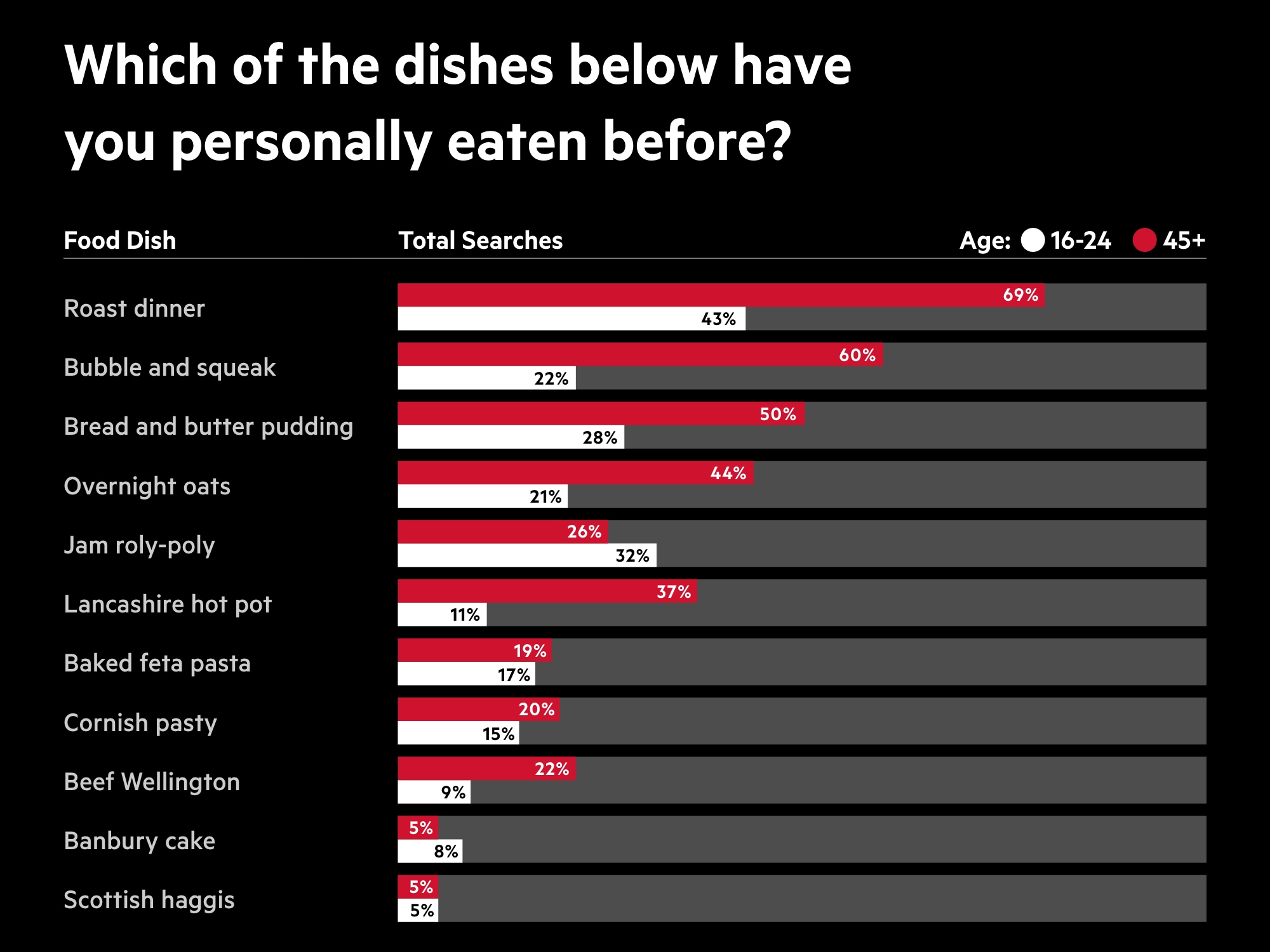Lifespan Of British Dishes

We’ve been to the year 3000 and these British dishes won’t exist
The first British dish to die is Banbury cake, expected to die out in 2034. Banbury cake is a puff pastry sweet treat consisting of butter, currants, zest, cinnamon, and nutmeg, and while it sounds delicious – we predict it will meet its death in just 11 years.
Next on the list is a jam roly-poly, dying out in 2055 (32 years from now). This traditional British pudding is a flat-rolled suet pudding, covered with jam and then rolled up. It’s then either steamed or baked in the oven.
Other dishes on the death list include Stilton cheese, meeting its death in 2085, steak and kidney pie (2178), bread and butter pudding (2205), and cottage pie (2811).
British foods that will stand the test of time – with search volume on the continuous increase – include British staples - fish and chips, roast dinner, full English breakfast, and stuffing.

The Most Popular British Dishes
While Google search data has showed decline in some dishes with death dates predicted, the search volume of many British favourites is continuing to increase year on year. Fish and chips take the lead with a total of 170% increase between 2019 and 2022. We assume it comes with mushy peas too but are onboard for this British staple growing in popularity.
Next on the list is a Sunday roast, growing by 129% since 2019, showing that a good old-fashioned Sunday roast is still an essential for British families.
When it comes to TikTok dishes, these have also grown in popularity over previous years with many dishes hitting well over one million searches on Google. Dishes such as such as Shakshuka, hot chocolate bombs, and cloud bread have boomed in the past three years. While TikTok pasta – baked feta and tomato pasta – doesn’t make the top 10, it’s often considered the dish that really put TikTok on the map as becoming a source for cooking inspiration.

Fish and chips rightfully take the top spot as the most searched for British food, with 16 million Google searches in four years – that’s roughly four million per year.
Brits love batter as Yorkshire pudding and toad in the hole take the second and third spot, with close to 13 million and 7 million searches, respectively. Next on the list, is British classic afternoon tea.
Scottish haggis also makes the list coming ninth with four million UK searches.

Are traditional dishes becoming less popular with younger generations?
While many generations are finding comfort in TikTok and exploring new food trends from this, our data shows it could be at the expense of traditional British dishes. Surveying all generations, we asked if respondents knew of the most popular British dishes and secondly, if they’d eaten them.
The dish Brits are most confident they’ve heard of is the jam roly-poly, with 94% of those aged 45+ confident they know this dish. However, in contrast to this, just over half (54%) of 16-24’s have heard of the dessert, showing that traditional dishes may not be as popular with younger generations. Similar trends continue with bread and butter pudding and beef Wellington, as roughly twice as many over 45-year-olds have heard of the dishes in comparison to younger generations.
Local delicacy Lancashire hot pot really divided generations, with 88% of over 45’s knowing the dish while just 20% of 16-24’s could identify what the dish was.

While many of the UK’s finest foods are undoubtedly here to stay. Our data shows that many may be losing their place in British culture and slipping off the weekly meal plans in favour of passing TikTok trends, such as baked feta pasta and Cloud bread.
Whether it’s the traditional British dishes or the TikTok trending dishes that have got you inspired, why not head to your oven or cooker to try out your cooking skills.